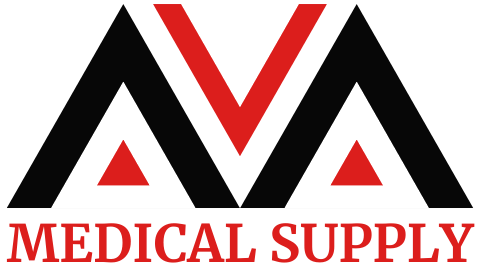
Healthcare is complicated, with it has various branches and services aimed at ensure the well-being of patients. Among these, DME providers play an important role in supplying patients with Durable Medical Equipment to assist them in managing their health conditions. While the focus of DME providers is on patient care, efficient inventory management is a required aspect of their operations.
If you’re a provider or just entering the field, understanding how to handle your inventory can make a significant difference in patient care, cost control, and regulatory compliance. In the following sections, we will see the discuss of DME inventory management for efficient inventory management and the specific challenges faced by DME providers.
Understanding DME Inventory
Explanation of DME inventory
DME inventory includes a wide range of equipment designed to improve the quality of life for patients with chronic illnesses, disabilities, or those recovering from medical conditions. This includes but is not limited to wheelchairs, walkers, oxygen tanks, nebulizers, hospital beds, and diabetic supplies. DME providers responsibility is to acquiring, storing, and dispensing these products, making inventory management a critical process of their daily operations.
Differentiate between different types of DME equipment
Products can be categorized into various types. Some product are high-demand and frequently needed, while others are specialized and may only be required for specific cases. Understanding these equipment types is important for managing inventory.
Challenges in inventory management
DME providers must face challenging factors such as unstable demand, regulatory compliance, and they need to ensure that Items are always in good condition. Inventory management has challenges due to the nature of the equipment and the ever-changing healthcare landscape.
Benefits of DME Inventory Management
Efficient inventory management is not just a matter of organization; it has numerous advantages for providers. These benefits extend to the well-being of patients, the financial health of the business, and compliance with healthcare rules and regulations.
Improved patient care and satisfaction
Timely Delivery:
This timely delivery can significantly impact a patient’s quality of life and recovery.
Reduced Downtime:
By having the right equipment on hand, DME providers can minimise downtime between patient orders and equipment availability, thus improving patient satisfaction.
Cost savings and reduced waste

Lower Holding Costs:
Streamlined inventory management minimises the costs associated with holding excess stock. This can free up finance for other investments and operations.
Minimised Waste:
Proper tracking and monitoring of inventory reduce the likelihood of equipment becoming obsolete or damaged, which can result in significant cost savings.
Regulatory compliance and accreditation
Meeting Industry Standards:
Efficient management aids in meeting the stringent standards set by regulatory bodies and accreditation organisations like the Joint Commission or the Accreditation Commission for Health Care (ACHC).
Documentation and Reporting:
Maintaining accurate inventory records ensures that DME providers have the documentation needed to demonstrate compliance with regulations and standards.
Tips for Managing DME Inventory
Managing DME inventory effectively requires a strategic approach that takes into account the diverse nature of medical equipment and the unique demands of the healthcare industry. Here are some key tips to help DME providers optimise their inventory management processes
Categorizing inventory items
High-demand vs. low-demand items: Distinguish between frequently requested items and those with lower demand. Prioritize the stocking and reordering of high-demand equipment.
Seasonal considerations:
Be mindful of seasonal variations in demand. Some equipment may be in higher demand during certain times of the year, such as flu season or summer vacations.
Inventory tracking and control
Implementing an inventory management system:
Invest in specialised software or systems that can automate and streamline inventory tracking, reducing the risk of human error.
Barcode and RFID technology:
Use barcode and radio-frequency identification (RFID) technology to efficiently track and locate equipment within your inventory.
Forecasting and demand planning
Historical data analysis:
Analyze historical data to identify trends and patterns in equipment demand. This helps in making more accurate forecasts and ordering decisions.
Collaborating with healthcare providers:
Maintain open communication with healthcare professionals to understand patient needs better and adapt your inventory to match evolving healthcare practices.
Vendor and supplier relationships
Negotiating favourable terms:
Build strong relationships with vendors and suppliers. Negotiate favourable terms, such as bulk discounts or flexible payment options, to reduce costs.
Maintaining communication:
Regularly communicate with your suppliers to stay informed about product availability, lead times, and any potential disruptions in the supply chain.
Staff training and education
Ensuring all staff understand the inventory process:
Provide training to all staff involved in the inventory management process, ensuring they understand the importance of accurate record-keeping and equipment handling.
Regular training updates:
Keep staff informed about changes in procedures, new technologies, and industry best practices through ongoing training and education programs.
Regulatory Compliance and Accreditation
Durable Medical Equipment (DME) providers must maintain high levels of compliance to ensure the quality of their services and the safety of their patients. Let’s talk about the significance of regulatory compliance and accreditation within the context of DME inventory management.
Explaining the importance of meeting regulatory requirements
Patient Safety:
Regulatory requirements are made for patient’s safety. Compliance ensures that equipment is maintained, sanitised, and functioning properly, reducing the risk of harm or infection.
Legal Obligations:
Failure to comply with regulatory standards can result in legal problems, fines, or even the revocation of operating licenses. Compliant providers not only avoid these risks but also build trust with patients and healthcare professionals.
Accreditation standards (e.g., Joint Commission, ACHC)
Joint Commission:
The Joint Commission, a well-respected accreditation organisation, sets high standards for healthcare providers, which include DME companies. Achieving Joint Commission accreditation is a testament to a provider’s commitment to maintaining high-quality standards in patient care.
Accreditation Commission for Health Care (ACHC):
ACHC also provides accreditation for DME providers, focusing on compliance with industry-specific standards. This accreditation assures patients, payers, and healthcare providers that a DME company meets or exceeds industry benchmarks.
How efficient inventory management aids in compliance and accreditation
Efficient inventory management directly contributes to regulatory compliance and accreditation by ensuring that a DME provider can consistently meet the standards set by organisations like the Joint Commission and ACHC.
Documentation and Reporting:
Up-to-date inventory records are required for demonstrating compliance. Inventory management systems that track equipment status, maintenance schedules, and expiration dates help providers provide the required documentation.
Quality Assurance:
Maintaining a well-organised inventory helps in ensuring that equipment is regularly inspected, sanitised, and serviced as needed. Compliance with quality assurance standards is integral to meeting accreditation requirements.
Inventory Controls:
Efficient inventory management allows DME providers to have better control over their equipment, reducing the risk of equipment failures, recalls, or product defects that could impact patient safety.
Traceability:
In the event of recalls or safety concerns, an efficient inventory management system can quickly trace and identify affected equipment, minimising patient risk and potential legal issues.
At Ava Medical Supply, we take pride in being your go-to destination for all your Durable Medical Equipment (DME) needs. With years of experience and a commitment to quality, we provide a comprehensive range of dme medical supply that cater to diverse requirements. From mobility aids and orthopedic support to respiratory devices and daily living essentials, we ensure that our customers receive top-notch products that enhance their quality of life. Our mission is to make healthcare more accessible, affordable, and convenient, empowering individuals to lead healthy and fulfilling lives. When it comes to reliable DME solutions, Ava Medical Supply is your trusted partner in wellness and well-being.













